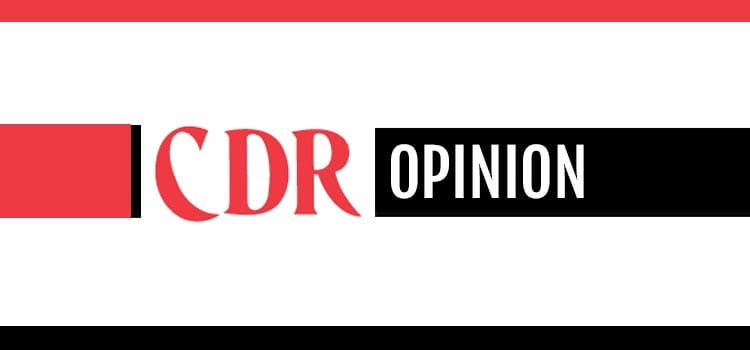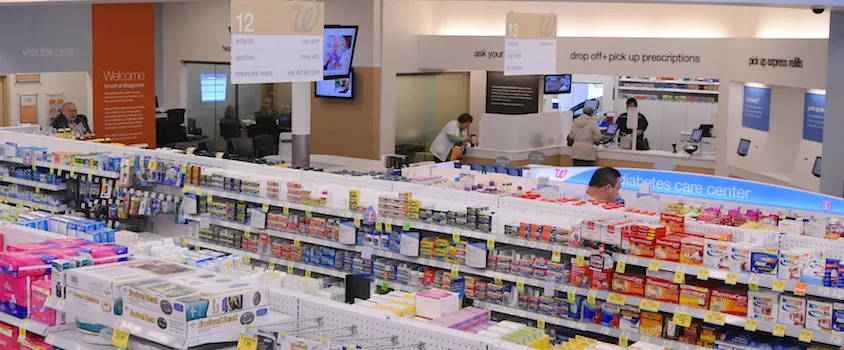New categories can develop when product innovation meets a consumer’s unmet need in a way that no existing category has provided. Retailers that adopt a new category or subcategory early can gain an edge over their competitors.
Emerging retail categories disrupt and change the retail market. There are innovative retail categories that include virtual reality offerings and others that provide holistic, need-driven assortments, helping to drive consumers out of their homes and into retail shopping centers. We are also beginning to see far more emphasis placed on proactive prevention and wellness at retail rather than a more traditionally focused, reactive treatment mentality.

Dave Wendland, Hamacher Resource Group
Here are a few examples of categories that may be finding their way into the retail health care vernacular and catching the interest of pharmacy operations across the U.S.
Achieving the new “healthy” is a consumer journey of discovery that will lead to the emergence of several expanded categories at retail. Food may be one of the most important, because it’s a necessity and there is a movement afoot to increase awareness of the impact food has on our health, as well as “food as medicine.”
Recognizing this trend within Hamacher Resource Group, we participated on a panel at United Fresh Produce Association’s annual conference this year, which spotlighted the benefits of making fresh produce available in pharmacies as an additional element to enhance customers’ health or help manage chronic conditions.
To address this broadening segment of health-focused consumers, imagine an expanded category at retail incorporating a broader assortment of fresh produce, with product selection guidance that aligns with dietary objectives (e.g., gluten free, Paleo, vegan, etc.), along with an expanded array of vitamins, dietary supplements and functional food choices.
Another emerging category focus could center on energy. To many, energy is nearly as important as concern over weight management and physical fitness. In fact the very definition of wellness is having the energy to live an active and fulfilling life. A 2015 Hartman Group study revealed that almost a third of consumers view their energy levels as urgently needing improvement — this is surpassed in importance only by thoughts about getting fit and losing weight.

In a study released last year, the Centers for Disease Control and Prevention (CDC) said that some 35% of U.S. adults report that they average less than seven hours of sleep per night. The CDC has linked lack of sleep to everything from heart disease to obesity to depression. Sleep deprivation, eating habits, stress and general lifestyle choices can all contribute to lower-than-ideal energy levels.
A category addressing this energy-centric need state would surely meet growing demand that hasn’t been capitalized on. Such a solution set could comprise products addressing areas such as acuity and brain health, restful sleep and stress reduction, as well as more traditional energy boosting aids.
Much attention has been given in years past to the diabetes crisis, and many retailers have done an admirable job creating destinations and grouping products that help diabetes patients manage their condition effectively while also addressing comorbidities such as hypertension, obesity, cardiovascular disease, foot care, pain and other health challenges.
Taking this a step further, some retailers are creating categories that are solution sets for chronic health conditions such as arthritis, hypertension and cancer, among others. Not only do such solution centers address issues associated with the condition, but they also provide valuable support resources and educational advice to family caregivers caring for a loved one.
Understanding the condition and associated needs from the vantage point of the consumer will be essential in constructing a meaningful category to best serve patients. An individual patient’s journey may begin in the pharmacy but soon demand more convenient and self-directed choices in a well-designed and stocked category.
As the entire health ecosystem continues to transition from transactional-based to outcomes-based models, moving patient recovery to the home front has become of utmost importance. A category to address the various needs of such patients is ripe for creation.
Readmitting patients to the hospital after a procedure costs the U.S. health care system more than $40 billion annually, according to a study by the Agency for Healthcare Research and Quality. Of that, more than $4 billion is due to Medicare patients suffering from congestive heart failure, septicemia and pneumonia, and being readmitted to the hospital within the first 30 days of discharge.
The magnitude of readmissions is scary and costly, and retail pharmacy has a unique opportunity to help as the health care system continues to work toward reducing the number of hospital readmissions. Such a category may include products to aid in wound management, ensure proper monitoring, support prescription adherence, and provide solutions for nutrition and hydration needs.
The birth of new retail categories is indeed a trend moving forward, and it will help to keep retail alive as new innovations are created. Given consumer focus toward prevention, recovery and wellness, traditional approaches that empower their shopping experience must evolve … quickly.
Dave Wendland is vice president of strategic relations and a member of the owners group at Hamacher Resource Group Inc.







